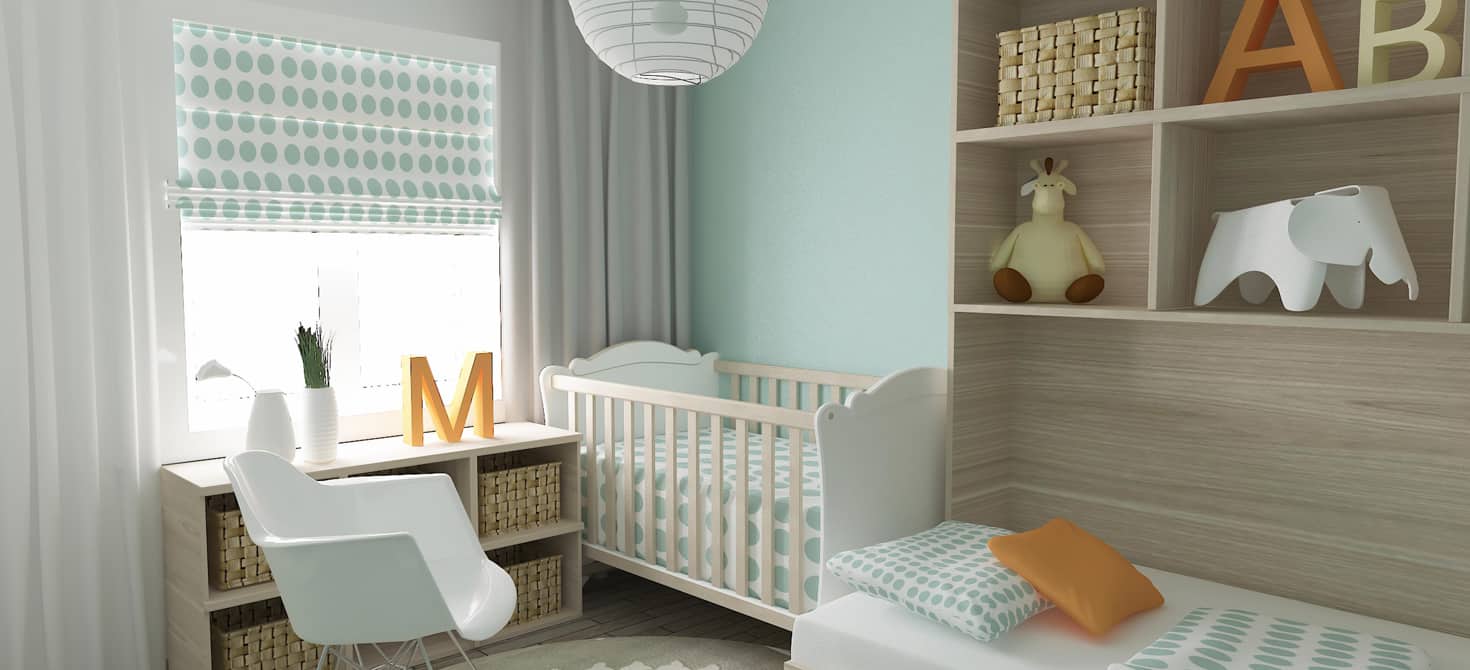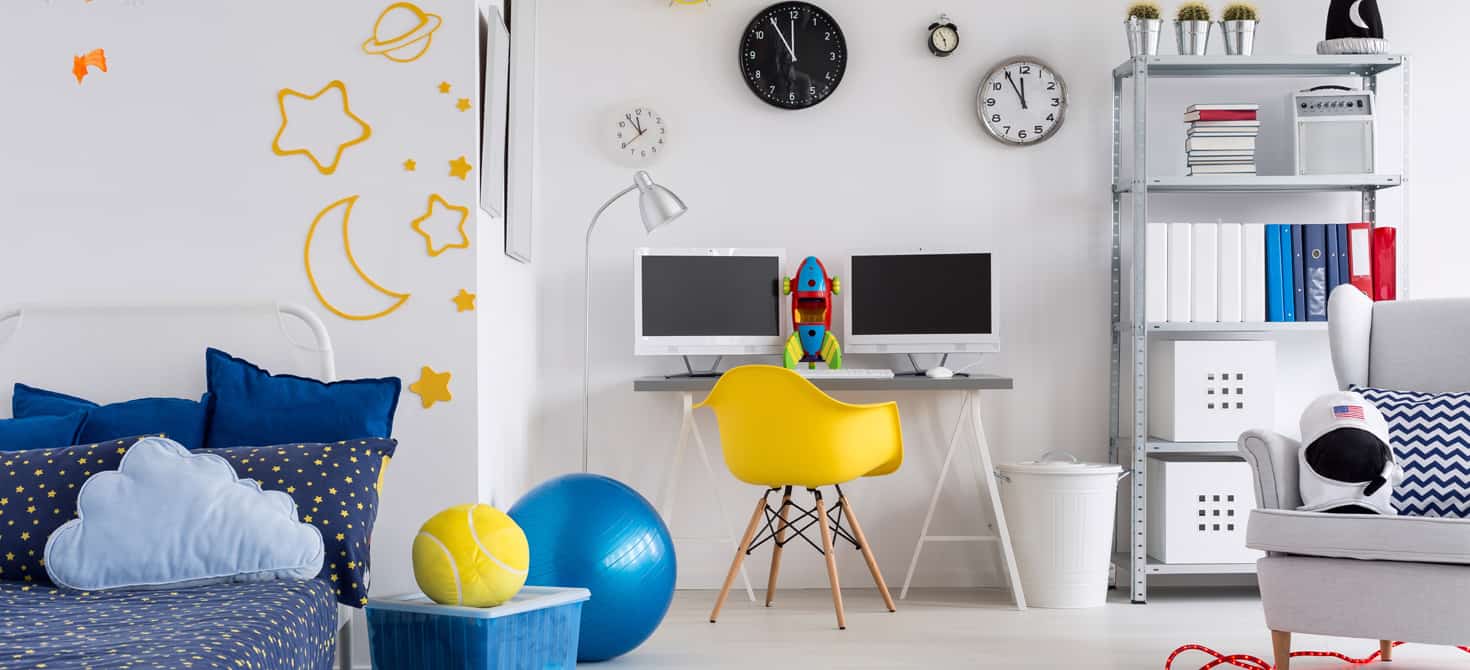- Furnishing tips
- 0 likes
- 3179 views

How to choose the colours of the children's room? And how to match them in the best way, to create a cheerful space suitable to welcome their little ones?
In this article we will give you some important tips and tricks to help you choose the colours for your children's room.
Index
Relaxing colours for children's bedrooms
The bedroom is first of all the place where our children spend a lot of time: the space in which they can relax and, in a certain sense, live their dreams and their everyday life.
What you need to know is that with a bit of imagination you can transform your children's bedroom into a magical environment in which they can grow up peaceful and happy. The task of each parent is to make the children's bedroom as comfortable and suitable as possible to develop their imagination and creativity: in this regard it will be extremely important to pay the utmost attention to the choice of colours in the bedroom: these play a major role in the development of your children's emotions and perceptions.
For this reason it is very important to prefer relaxing colours: the choice can therefore fall on pastel colours: these are particularly delicate, soft and at the same time bright colours that will give your children's bedroom the right harmony and freshness.
Among the most popular pastel colours there are certainly the softer ones, such as beige and evergreen pink and light blue. The bright white is always very popular.
Male and female in the same bedroom: which colours to choose
Which colours to choose if a child is living in the bedroom? And if it is a girl? Or if a boy and a girl will live in the bedroom together? Let's try to solve this dilemma together.
If both children of different sexes are in the same bedroom, the solution could be to prefer neutral colours, such as beige or aqua green, or the more lively yellow and orange, the latter always used in very soft colours.

Regardless of what colour you will choose for your children's room, our advice is to match the chosen colour with light wood furniture or alternatively white lacquered furniture. In a children's room, there should also never be a lack of soft cushions and warm covers, possibly colourful and cheerful.
If you have to choose the colour of the walls of a little room inhabited by a girl, you can opt for the classic and romantic pink, while a little room with blue walls will adapt to the presence of a boy.
As for the colours and decorations of the walls in a children's bedroom, a good alternative to colour can be the use of wallpaper or the application of stencil. Especially when it comes to stencils, our advice is not to exaggerate in order to avoid overburdening the room.
Also for the children's bedroom, the intelligent use of colours can be a valid ally to correct any defects in the environment: the choice of the right colour is often and willingly a solution capable of making a room with a particularly limited size seem larger.
How to match colours in a children's room
If it is not at all easy to choose the colours of a children's room, their matching is even more complex. When choosing and matching the colours of this room, your aim must always be to create the right harmony in the space, giving your children a fun and at the same time curative daily experience.
In this regard, our suggestion can only be to choose pastel colours: you can range from classic white to brighter and more vivid colours such as blue, green or yellow or pink. Last but not least, you can choose to use grey: the latter combined with pastel colours is able to give rise to a visual effect of great impact and suggestion.
The colour of the walls of the children's bedroom must be chosen taking into account the colours that prevail and that characterise the furnishings, objects and accessories in the room. If you have chosen furniture characterised by particularly bright and bright colours and hues, in this case it is best to opt for very neutral and calm white walls.
If you decide to apply wallpaper to the walls, the rule in this case is not to mix different patterns, preferring solid-coloured elements for the textiles.
The colours of a room and their influence on the state of mind
When choosing the colours of a room and even more so of a children's room, we should never forget that colours can actively influence and condition our mood.
Each colour is in fact able to transmit precise emotions to us: some colours in particular are able to create a state of calm and wellbeing while others are able to arouse adverse sensations such as anxiety and upset: these are the principles of colour therapy: this is an important branch of natural medicine that uses different chromatic vibrations to rebalance psychophysical energies.
According to chromotherapy, when an area of the body is subjected to a particular coloured irradiation, a real absorption of electromagnetic waves takes place, characterised by a different frequency that may vary according to the type of colour.
Each wavelength corresponds to a vibration capable of influencing our mood, making us feel at times calmer and more relaxed, and at other times more concentrated and active. For this reason it is very important to pay due attention to the colours we choose for the children's room.
Following the principles of colour therapy, we can say that blue is generally one of the most suitable colours for children and adolescents, since the presence of this colour helps to eliminate tension and relax the mind. Light blue is a colour that not only has a calming and tranquilising effect but is also able to stimulate imagination and creativity, communication and interpersonal relationships.
Another colour characterised by important properties is green: this colour seems in fact suitable to restore the right psychophysical balance. Green is the perfect colour at a time when the child begins to deal with external stimuli and in particular with those that characterise school. Green encourages optimism and open-mindedness, which is crucial for achieving one's goals.

Finally, a brief mention for the colour yellow: the colour of the sun is able to transmit great energy and dynamism. Choosing yellow for the children's bedroom means giving life to a cheerful and positive environment, able to adapt to every moment of the day: from the study phase to moments of play, relaxation and light-heartedness. Combine it with grey for an elegant match. Orange is the artistic colour par excellence, which stimulates creativity and imagination. It is a colour that is particularly rich in positivity and optimism, since it is a warm colour, orange is also able to give security, making us feel loved and protected.
